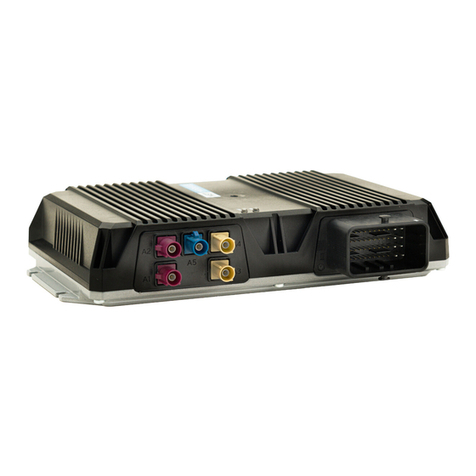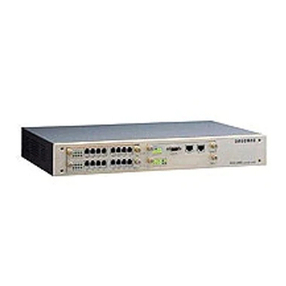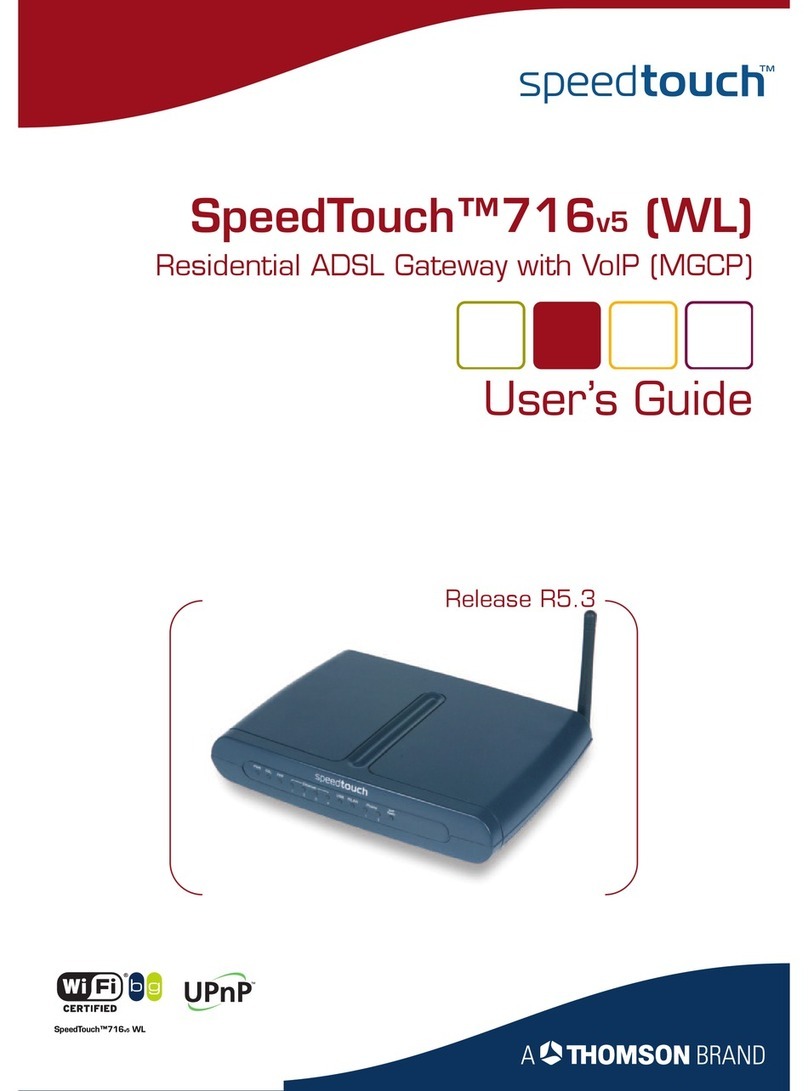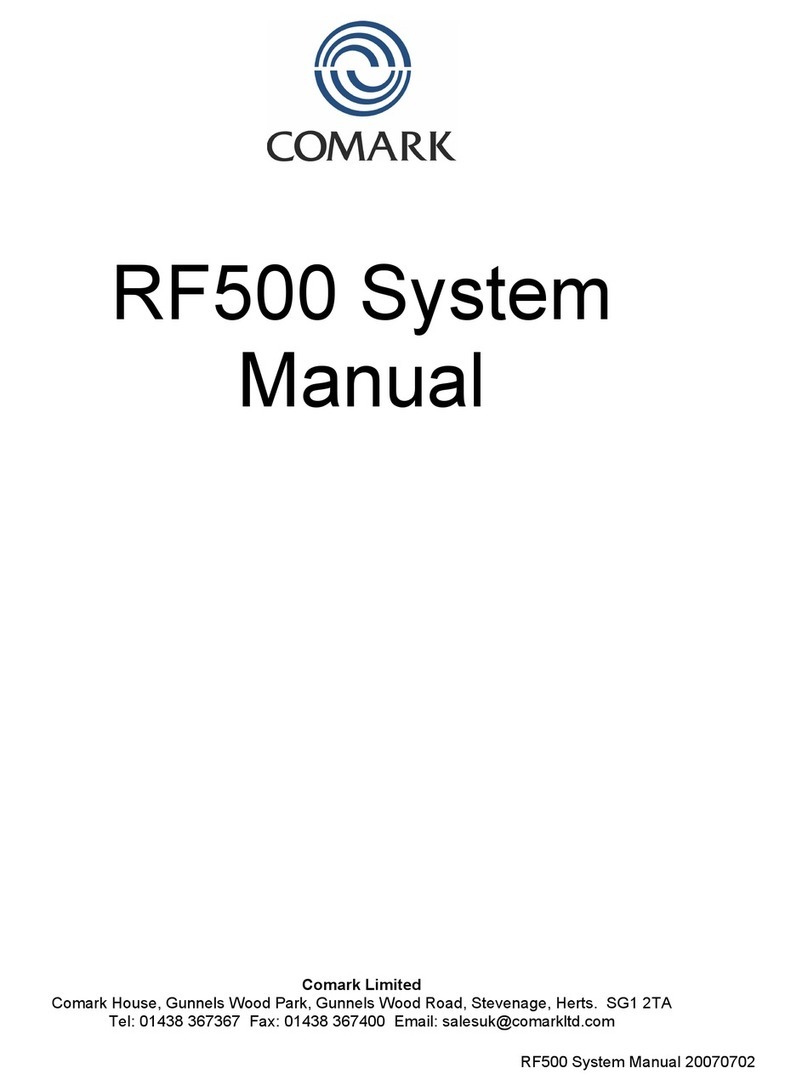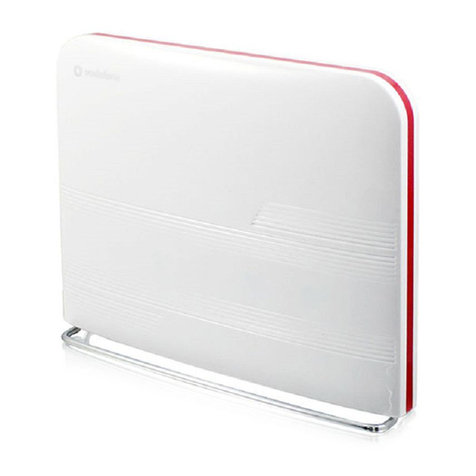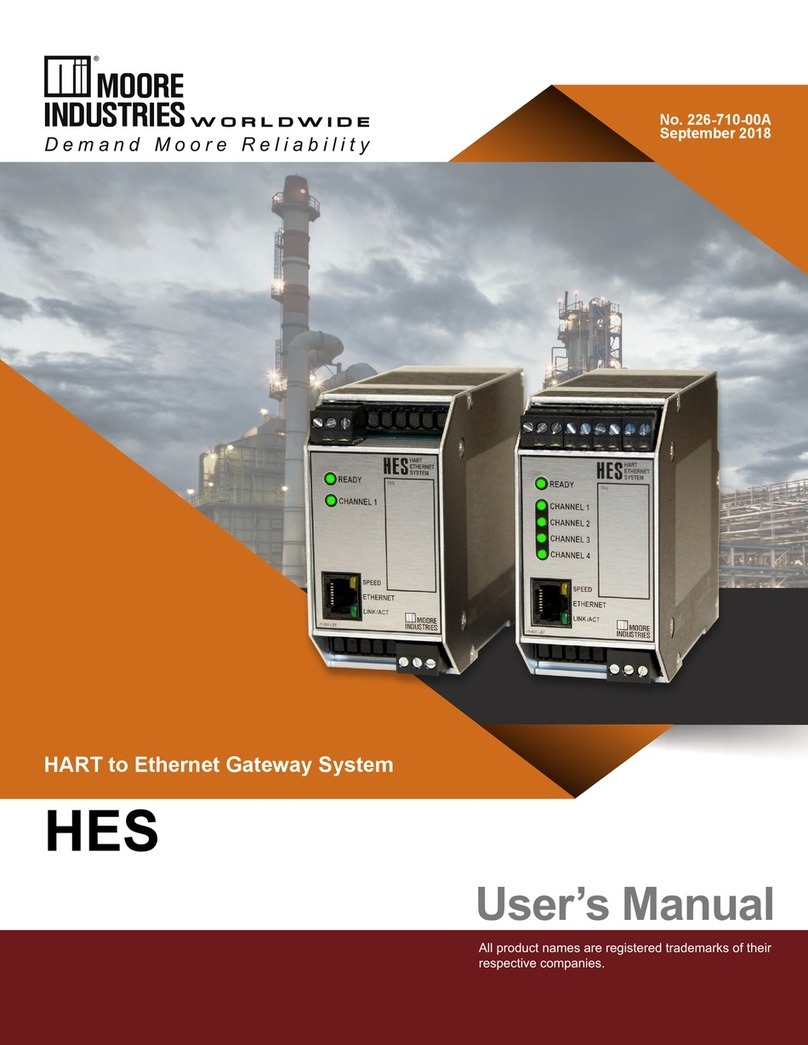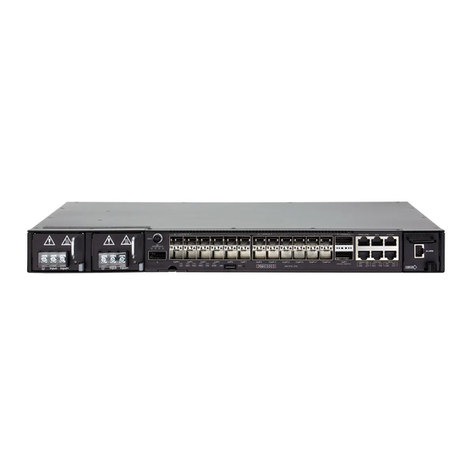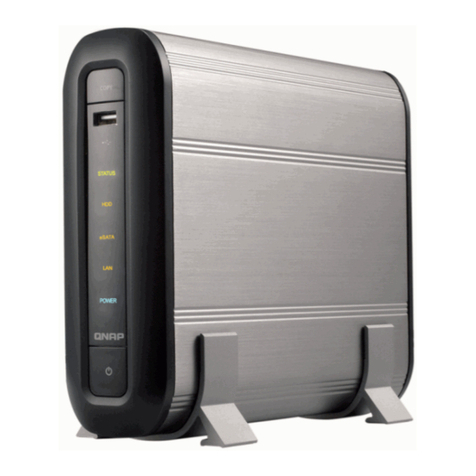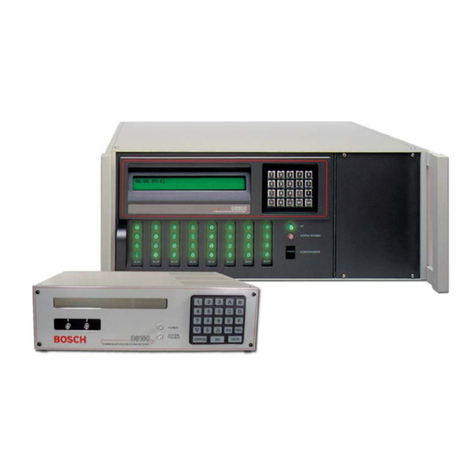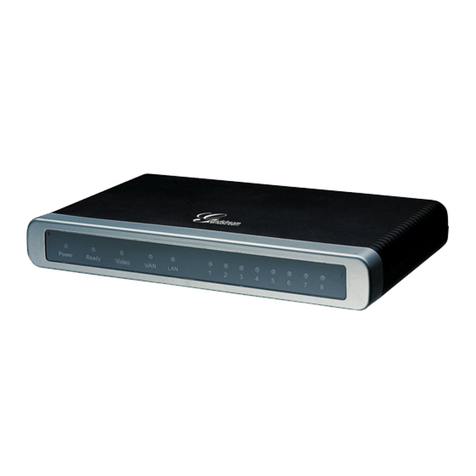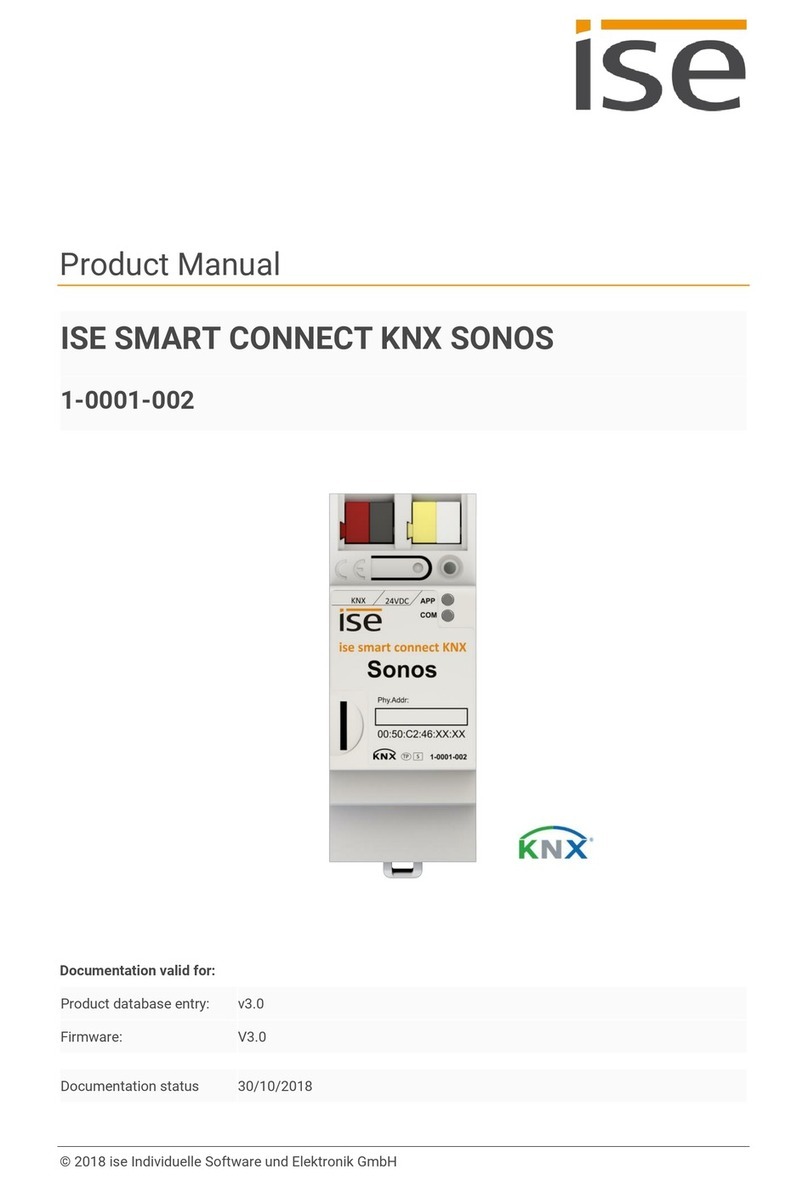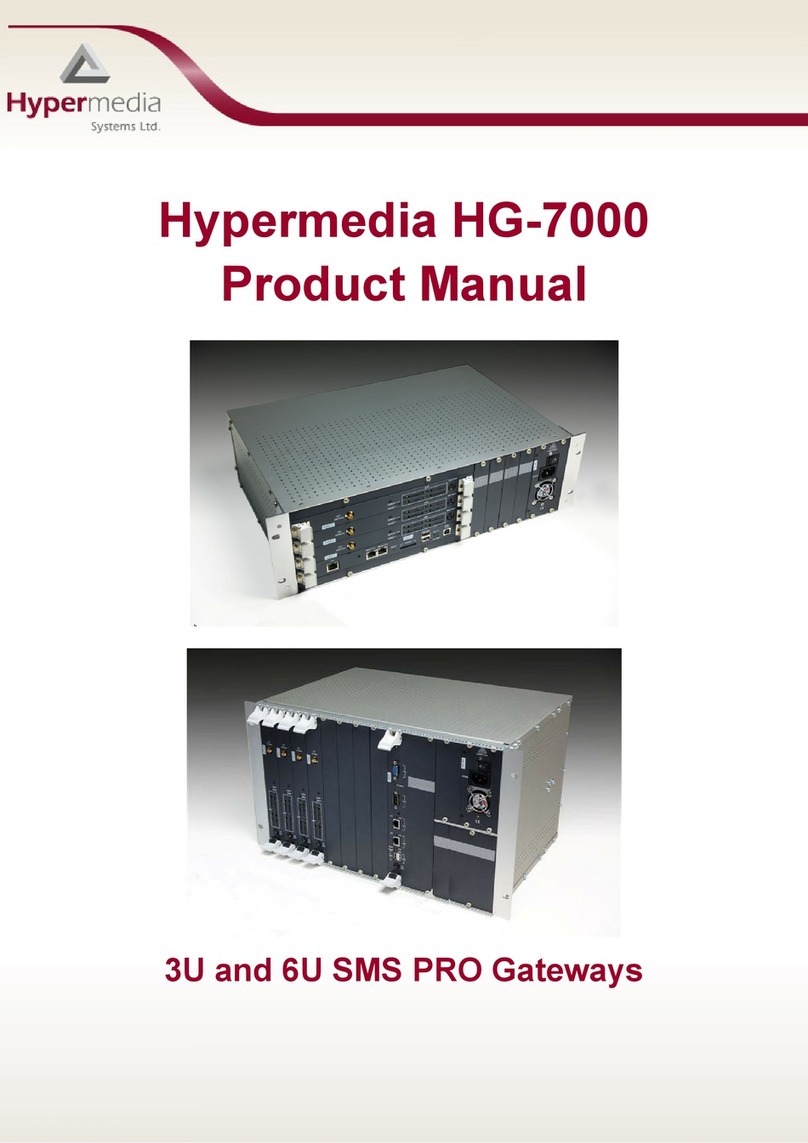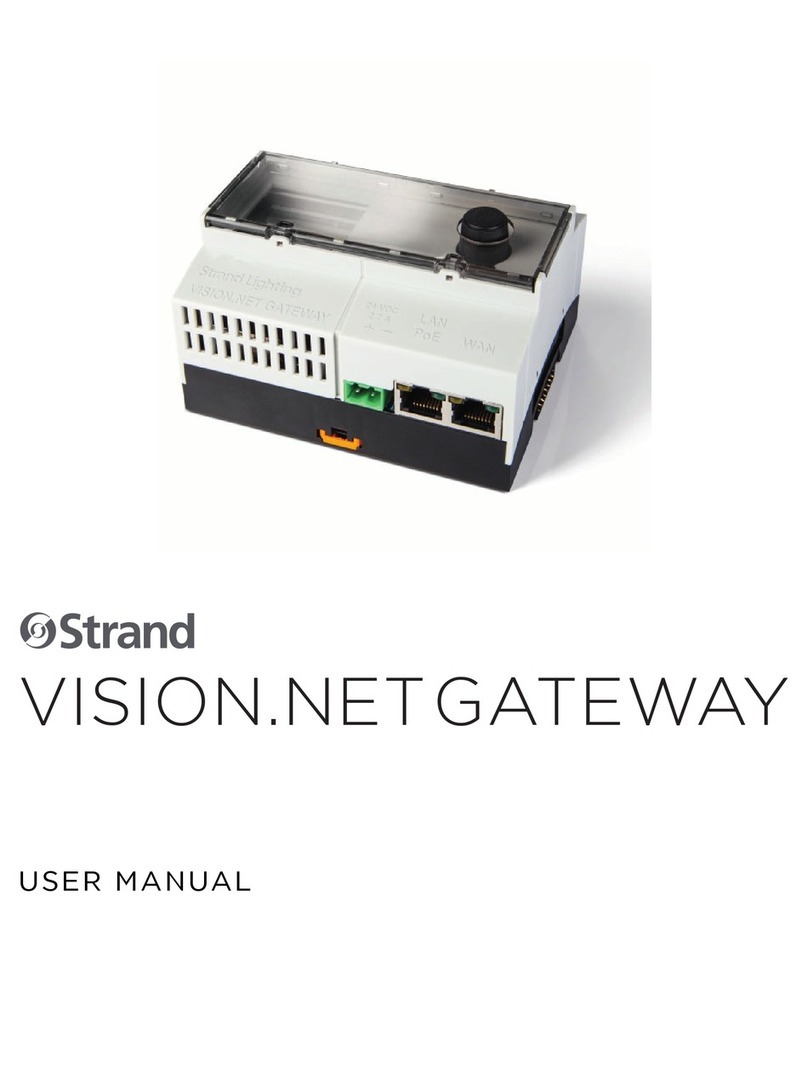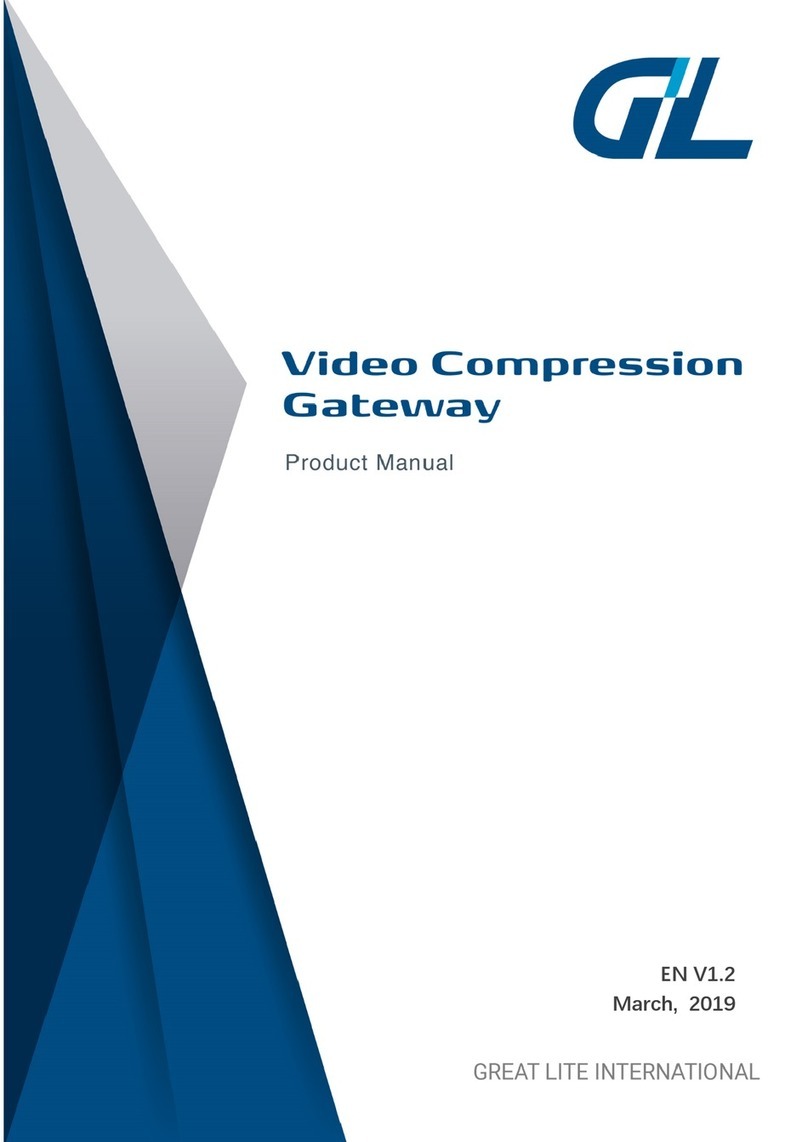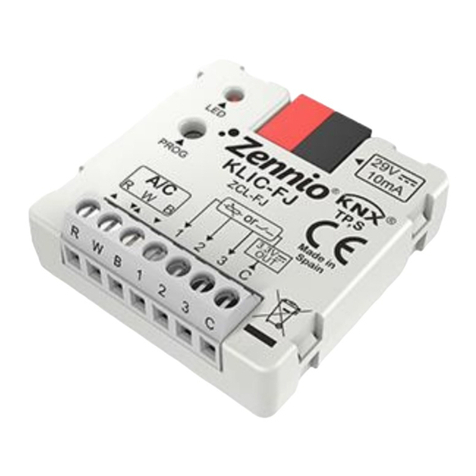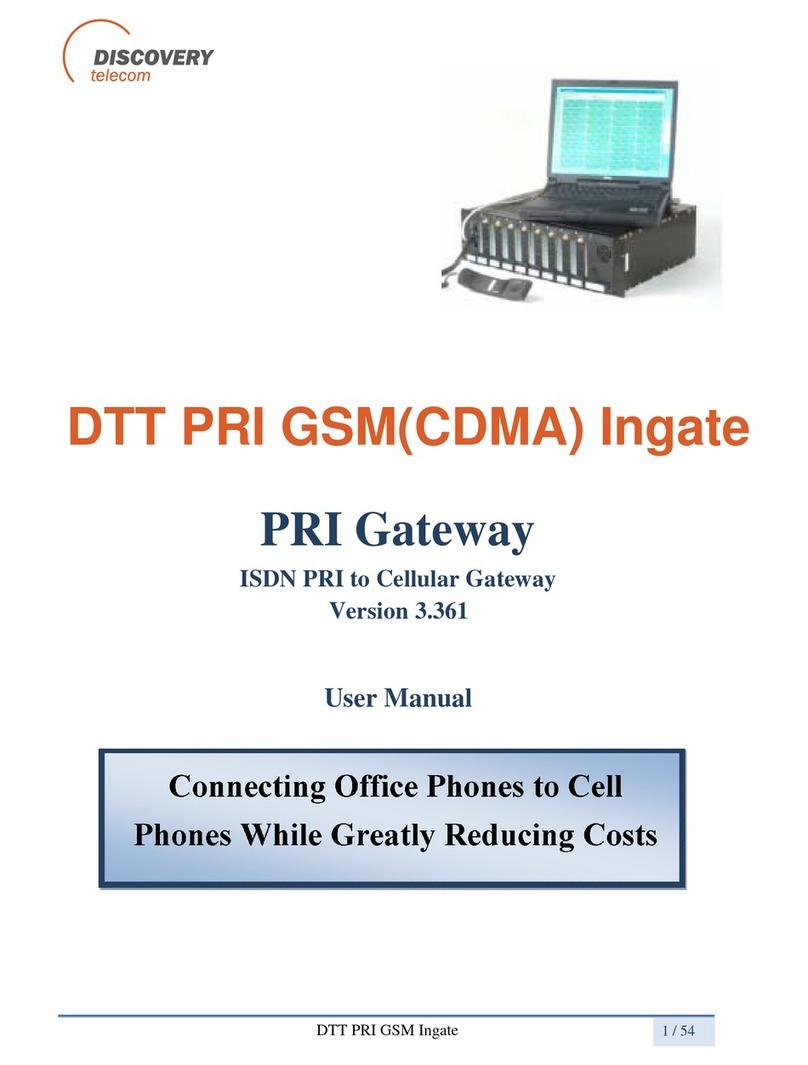NetModule NG800 User manual

NetModule Automotive Gateway NG800
User Manual for Software Version 4.5.0.100
Manual Version 2.272
NetModule AG, Switzerland
December 15, 2020

NG800
User Manual for NRSW version 4.5.0.100
NetModule Automotive Gateway NG800
This manual covers all variants of the NG800 product type.
The specifications and information regarding the products in this manual are subject to change without notice. We would
like to point out that NetModule makes no representation or warranties with respect to the contents herein and shall not
be responsible for any loss or damage caused to the user by the direct or indirect use of this information This document
may contain information about third party products or processes. Such third party information is generally out of influence
of NetModule and therefore NetModule shall not be responsible for the correctness or legitimacy of this information. Users
must take full responsibility for their application of any products.
Copyright ©2020 NetModule AG, Switzerland All rights reserved
This document contains proprietary information of NetModule. No parts of the work described herein may be reproduced.
Reverse engineering of the hardware or software is prohibited and protected by patent law. This material or any portion of
it may not be copied in any form or by any means, stored in a retrieval system, adopted or transmitted in any form or by
any means (electronic, mechanical, photographic, graphic, optic or otherwise), or translated in any language or computer
language without the prior written permission of NetModule.
A large amount of the source code to this product is available under licenses which are both free and open source. Most of it
is covered by the GNU General Public License which can be obtained from www.gnu.org. The remainder of the open source
software which is not under the GPL, is usually available under one of a variety of more permissive licenses. A detailed
license information for a particular software package can be provided on request.
All other products or company names mentioned herein are used for identification purposes only and may be trademarks or
registered trademarks of their respective owners. The following description of software, hardware or process of NetModule or
other third party provider may be included with your product and will be subject to the software, hardware or other license
agreements.
Contact
www.netmodule.com/support
NetModule AG Tel +41 31 985 25 10
Maulbeerstrasse 10 Fax +41 31 985 25 11
Switzerland http://www.netmodule.com
2

NG800
User Manual for NRSW version 4.5.0.100
Contents
1. Welcome to NetModule ....................................... 9
2. Conformity .............................................. 10
2.1. Safety Instructions ....................................... 10
2.2. Declaration of Conformity ................................... 11
2.3. Waste Disposal ........................................ 11
2.4. National Restrictions ..................................... 11
2.5. Open Source Software .................................... 12
3. Specifications ............................................. 13
3.1. Appearance .......................................... 13
3.2. Features ............................................ 14
3.3. Environmental Conditions .................................. 14
3.4. Interfaces ........................................... 15
3.4.1. Overview ........................................ 15
3.4.2. Default LED Indicators ................................ 16
3.4.3. Reset .......................................... 16
3.4.4. Mobile ......................................... 18
3.4.5. Bluetooth ........................................ 18
3.4.6. WLAN ......................................... 19
3.4.7. GNSS ......................................... 20
3.4.8. Pin Assignment X48 ................................. 21
3.4.9. Power Supply ..................................... 23
3.4.10. Fast Ethernet (100 Base-Tx Interface) ........................ 24
3.4.11. Automotive Ethernet (100 Base-T1 Interface) .................... 24
3.4.12. 2x CAN Interface ................................... 26
3.4.13. Serial RS-232 ..................................... 27
4. Installation .............................................. 28
4.1. Installation of SIM ....................................... 28
4.2. Installation of the GSM/UMTS/LTE Antenna ........................ 28
4.3. Installation of the WLAN Antennas .............................. 29
4.4. Installation of the Bluetooth Antenna ............................ 29
4.5. Installation of the Local Area Network / Fast Ethernet ................... 29
4.6. Installation of the Automotive Ethernet ........................... 30
4.7. Installation of the Power Supply ............................... 30
5. Configuration ............................................. 31
5.1. First Steps ........................................... 31
5.1.1. Initial Access ...................................... 31
5.1.2. Recovery ........................................ 32
5.2. HOME ............................................. 34
5.3. INTERFACES ......................................... 37
5.3.1. WAN .......................................... 37
5.3.2. Ethernet ........................................ 43
5.3.3. Mobile ......................................... 48
5.3.4. WLAN ......................................... 53
5.3.5. Software Bridges ................................... 64
5.3.6. Serial Port ....................................... 65
5.3.7. Bluetooth Low Energy ................................. 70
5.3.8. GNSS ......................................... 71
3

NG800
User Manual for NRSW version 4.5.0.100
5.4. ROUTING ........................................... 74
5.4.1. Static Routes ..................................... 74
5.4.2. Extended Routing ................................... 76
5.4.3. Multipath Routes ................................... 77
5.4.4. Mobile IP ........................................ 78
5.4.5. Quality Of Service ................................... 82
5.4.6. Multicast ........................................ 84
5.4.7. OSPF .......................................... 85
5.4.8. BGP .......................................... 86
5.5. FIREWALL ........................................... 87
5.5.1. Administration ..................................... 87
5.5.2. Adress/Port Groups .................................. 87
5.5.3. Rules .......................................... 88
5.5.4. NAPT .......................................... 90
5.6. VPN .............................................. 93
5.6.1. OpenVPN ....................................... 93
5.6.2. IPsec .......................................... 99
5.6.3. PPTP .......................................... 105
5.6.4. GRE .......................................... 108
5.6.5. L2TP .......................................... 109
5.6.6. Dial-In ......................................... 110
5.7. SERVICES ........................................... 112
5.7.1. SDK .......................................... 112
5.7.2. DHCP Server ..................................... 121
5.7.3. DNS Server ...................................... 123
5.7.4. NTP Server ...................................... 126
5.7.5. Dynamic DNS ..................................... 127
5.7.6. E-Mail ......................................... 129
5.7.7. Events ......................................... 131
5.7.8. SMS .......................................... 132
5.7.9. SSH/Telnet Server ................................... 134
5.7.10. SNMP Agent ...................................... 136
5.7.11. Web Server ...................................... 141
5.7.12. MQTT Broker ..................................... 142
5.7.13. Softflow ......................................... 143
5.7.14. Discovery ....................................... 144
5.7.15. Redundancy ...................................... 145
5.7.16. ITxPT .......................................... 147
5.7.17. Voice Gateway ..................................... 155
5.8. SYSTEM ............................................ 161
5.8.1. System ......................................... 161
5.8.2. Authentication ..................................... 165
5.8.3. Software Update .................................... 168
5.8.4. Module Firmware Update ............................... 169
5.8.5. Software Profiles ................................... 170
5.8.6. Configuration ..................................... 171
5.8.7. Troubleshooting .................................... 174
5.8.8. Keys and Certificates ................................. 177
5.8.9. Licensing ........................................ 182
4

NG800
User Manual for NRSW version 4.5.0.100
5.8.10. Legal Notice ...................................... 183
5.9. LOGOUT ............................................ 184
6. Command Line Interface ....................................... 185
6.1. General Usage ........................................ 185
6.2. Print Help ........................................... 186
6.3. Getting Config Parameters .................................. 186
6.4. Setting Config Parameters .................................. 187
6.5. Checking Config Completed ................................. 187
6.6. Getting Status Information .................................. 187
6.7. Scanning Networks ...................................... 188
6.8. Sending E-Mail or SMS .................................... 188
6.9. Updating System Facilities .................................. 188
6.10. Manage keys and certificates ................................ 189
6.11. Restarting Services ...................................... 189
6.12. Debug System ......................................... 190
6.13. Resetting System ....................................... 190
6.14. Rebooting System ....................................... 191
6.15. Running Shell Commands .................................. 191
6.16. Working with History ..................................... 191
6.17. CLI-PHP ............................................ 191
A. Appendix ............................................... 197
A.1. Abbrevations .......................................... 197
A.2. System Events ......................................... 198
A.3. Factory Configuration ..................................... 201
A.4. SNMP VENDOR MIB ..................................... 202
A.5. SDK Examples ........................................ 221
5

NG800
User Manual for NRSW version 4.5.0.100
List of Figures
3.1. Reset Input (Serial Interface not used) ........................... 17
3.2. Reset Input (Serial Interface used) .............................. 17
3.3. Pin Assignment X48 ...................................... 21
3.4. X48 Outline .......................................... 21
5.1. Initial Login ........................................... 32
5.2. Home .............................................. 34
5.3. WAN Links ........................................... 37
5.4. WAN Settings ......................................... 40
5.5. Link Supervision ........................................ 41
5.6. Ethernet Ports ......................................... 43
5.7. Ethernet Link Settings .................................... 44
5.8. VLAN Management ...................................... 45
5.9. LAN IP Configuration ..................................... 46
5.10. SIMs .............................................. 48
5.11. WWAN Interfaces ....................................... 51
5.12. WLAN Management ...................................... 53
5.13. WLAN Configuration ..................................... 58
5.14. WLAN IP Configuration .................................... 62
5.15. Serial Port Administration ................................... 66
5.16. Serial Port Settings ...................................... 67
5.17. Static Routing ......................................... 74
5.18. Extended Routing ....................................... 76
5.19. Multipath Routes ....................................... 77
5.20. Mobile IP ............................................ 80
5.21. Firewall Groups ........................................ 87
5.22. Firewall Rules ......................................... 88
5.23. Masquerading ......................................... 90
5.24. Inbound NAPT ......................................... 91
5.25. OpenVPN Administration ................................... 93
5.26. OpenVPN Configuration ................................... 94
5.27. OpenVPN Client Management ................................ 98
5.28. IPsec Administration ..................................... 100
5.29. IPsec Configuration ...................................... 101
5.30. PPTP Administration ..................................... 105
5.31. PPTP Tunnel Configuration .................................. 106
5.32. PPTP Client Management .................................. 107
5.33. Dial-in Server Settings .................................... 110
5.34. SDK Administration ...................................... 116
5.35. SDK Jobs ........................................... 117
5.36. DHCP Server ......................................... 121
5.37. DNS Server .......................................... 123
5.38. NTP Server .......................................... 126
5.39. Dynamic DNS Settings .................................... 127
5.40. E-Mail Settings ........................................ 129
5.41. SMS Configuration ...................................... 132
5.42. SSH and Telnet Server .................................... 134
5.43. SNMP Agent .......................................... 137
6

NG800
User Manual for NRSW version 4.5.0.100
5.44. Web Server .......................................... 141
5.45. VRRP Configuration ...................................... 145
5.46. ITxPT configuration ...................................... 147
5.47. ITxPT FMStoIP ........................................ 148
5.48. ITxPT GNSS .......................................... 152
5.49. ITxPT Time .......................................... 153
5.50. ITxPT VEHICLEtoIP ...................................... 154
5.51. Voice Gateway Administration ................................ 155
5.52. System ............................................. 161
5.53. Regional settings ....................................... 163
5.54. User Accounts ......................................... 165
5.55. Remote Authentication .................................... 166
5.56. Manual File Configuration .................................. 171
5.57. Automatic File Configuration ................................. 172
5.58. Factory Configuration ..................................... 173
5.59. Log Viewer ........................................... 175
5.60. Tech Support File ....................................... 176
5.61. Keys and certificates ..................................... 177
5.62. Certificate Configuration ................................... 179
5.63. Licensing ............................................ 182
7

NG800
User Manual for NRSW version 4.5.0.100
List of Tables
3.1. Environmental Conditions .................................. 14
3.2. NG800 Interfaces ...................................... 15
3.3. NG800 Status Indicators .................................. 16
3.4. Mobile Interface ....................................... 18
3.5. Mobile Antenna Port Specification ............................. 18
3.6. IEEE 802.11 Standards ................................... 19
3.7. WLAN Antenna Port Specification ............................. 19
3.8. GNSS Specifications .................................... 20
3.9. GNSS / GPS Antenna Port Specification ......................... 20
3.10. Pin Assignments of X48 ................................... 22
3.11. Power Specifications ..................................... 23
3.12. Pin Assignments of Power Supply ............................. 23
3.13. Fast Ethernet Port Specification .............................. 24
3.14. Pin Assignments of Fast Ethernet Connector ....................... 24
3.15. Automotive Ethernet Port Specification .......................... 25
3.16. Pin Assignments of Automotive Ethernet Port 1 ...................... 25
3.17. Pin Assignments of Automotive Ethernet Port 2 ...................... 25
3.18. Specification of 2xCAN Interface .............................. 26
3.19. Pin Assignments of 2xCAN Interface ............................ 26
3.20. RS-232 Port Specification .................................. 27
3.21. Pin Assignments of RS-232 Interface ........................... 27
5.20. IEEE 802.11 Network Standards .............................. 55
5.45. Static Route Flags ...................................... 75
5.92. SMS Control Commands .................................. 120
5.102. SMS Number Expressions ................................. 133
5.148. Certificate Sections ..................................... 178
5.149. Certificate Operations .................................... 178
A.1. Abbreviations ......................................... 198
A.2. System Events ........................................ 200
A.3. SDK Examples ........................................ 223
8

NG800
User Manual for NRSW version 4.5.0.100
1. Welcome to NetModule
Thank you for purchasing a NetModule product. This document should give you an introduction to the
device and its features. The following chapters describe any aspects of commissioning the device,
installation procedure and provide helpful information towards configuration and maintenance.
Please find further imformation such as sample SDK script or configuration samples in our wiki on
http://wiki.netmodule.com.
9

NG800
User Manual for NRSW version 4.5.0.100
2. Conformity
This chapter provides general information for putting the gateway into operation.
2.1. Safety Instructions
Please carefully observe all safety instructions in the manual that are marked with the symbol .
Compliance information: The NetModule gateways must be used in compliance with
any and all applicable national and international laws and with any special restrictions
regulating the utilization of the communication module in prescribed applications and
environments.
Information about the accessories / changes to the device:
– Please only use original accessories to prevent injuries and health risks.
– Changes made to the device or the use of non-authorized accessories will render the
warranty null and void and potentially invalidate the operating license.
Information about the device interfaces:
– All systems that are connected to the NetModule gateway interfaces must meet the
requirements for SELV (Safety Extra Low Voltage) systems.
– Interconnections must not leave the building nor penetrate the body shell of a vehicle.
– Connections for antennas may only exit the building or the vehicle hull if transient
overvoltages (according to IEC 62368-1) are limited by external protection circuits
down to 1 500 Vpeak. All other connections must remain within the building or the vehicle
hull.
– Always keep a distance of more than 40 cm from the antenna in order to reduce
exposure to electromagnetic fields below the legal limits.
– Devices with a WLAN interface may be operated only with applicable Regulatory Do-
main configured. Special attention must be paid to country, number of antennas and
the antenna gain (see also chapter 5.3.4). The maximum allowed gain is 3dBi in the
relevant frequency range. WLAN antennas with a higher amplification may be used
with the NetModule gateway "Enhanced-RF-Configuration" software license and the
antenna gain and cable attenuation that have been correctly configured by certified
specialized personnel. A misconfiguration will lead to loss of the approval.
– Cellular antennas attached to the gateway must have an antenna gain of equal or less
than 2.5 dBi. The user is responsible for the compliance with the legal regulations.
– Only CE-compliant power supplies with a current-limited SELV output voltage range
may be used with the NetModule gateways.
10

NG800
User Manual for NRSW version 4.5.0.100
General safety instructions:
– Observe the usage limitations of radio units at filling stations, in chemical plants, in
systems with explosives or potentially explosive locations.
– The devices may not be used in airplanes.
– Exercise particular caution near personal medical aids, such as pacemakers and hear-
ing aids.
– The NetModule gateways may also cause interference in the nearer distance of TV
sets, radio receivers and personal computers.
– Never perform work on the antenna system during a thunderstorm.
– Protect them against aggressive chemical atmospheres and humidity or temperatures
outside specifications.
– We highly recommended creating a copy of a working system configuration. It can be
easily applied to a newer software release afterwards.
2.2. Declaration of Conformity
NetModule hereby declares that under our own responsibility that the gateways
comply with the relevant standards following the provisions of the RED Directive
2014/53/EU. The signed version of the Declaration of Conformity can be obtained
from http://www.netmodule.com/downloads
2.3. Waste Disposal
In accordance with the requirements of the Council Directive 2012/19/EU regard-
ing Waste Electrical and Electronic Equipment (WEEE), you are urged to ensure
that this product will be segregated from other waste at end-of-life and delivered
to the WEEE collection system in your country for proper recycling.
2.4. National Restrictions
This product may be generally used in all EU countries (and other countries following the RED Directive
2014/53/EU) without any limitation. Please refer to our WLAN Regulatory Database for getting further
national radio interface regulations and requirements for a particular country.
11

NG800
User Manual for NRSW version 4.5.0.100
2.5. Open Source Software
We inform you that NetModule products may contain in part open-source software. We are distributing
such open-source software to you under the terms of GNU General Public License (GPL)1, GNU
Lesser General Public License (LGPL)2or other open-source licenses3. These licenses allow you to
run, copy, distribute, study, change and improve any software covered by GPL, Lesser GPL, or other
open-source licenses without any restrictions from us or our end user license agreement on what
you may do with that software. Unless required by applicable law or agreed to in writing, software
distributed under open-source licenses is distributed on an "AS IS" basis, WITHOUT WARRANTIES
OR CONDITIONS OF ANY KIND, either express or implied.
To obtain the corresponding open source codes covered by these licenses, please contact our techni-
cal support at router@support.netmodule.com.
Acknowledgements
This product includes:
– PHP, freely available from http://www.php.net
– Software developed by the OpenSSL Project for use in the OpenSSL Toolkit (http://www.openssl.org)
– Cryptographic software written by Eric Young (eay@cryptsoft.com)
– Software written by Tim Hudson (tjh@cryptsoft.com)
– Software written Jean-loup Gailly and Mark Adler
– MD5 Message-Digest Algorithm by RSA Data Security, Inc.
– An implementation of the AES encryption algorithm based on code released by Dr Brian Glad-
man
– Multiple-precision arithmetic code originally written by David Ireland
– Software from The FreeBSD Project (http://www.freebsd.org)
1Please find the GPL text under http://www.gnu.org/licenses/gpl-2.0.txt
2Please find the LGPL text under http://www.gnu.org/licenses/lgpl.txt
3Please find the license texts of OSI licenses (ISC License, MIT License, PHP License v3.0, zlib License) under
http://opensource.org/licenses
12

NG800
User Manual for NRSW version 4.5.0.100
3. Specifications
3.1. Appearance
13

NG800
User Manual for NRSW version 4.5.0.100
3.2. Features
All models of the NG800 Family have following standard functionalities:
– 1x LTE, UMTS, GSM
– 1x WLAN IEEE 802.11abgn with Bluetooth and Bluetooth Low Energy
– 1x GNSS with automotive Dead Reckoning
– 1x Fast Ethernet port (10/100 Mbit/s)
– 2x Automotive Ethernet ports (100BASE-T1)
– 1x eUICC SIM
– 1 GHz CPU, 512 MB RAM, 8 GB Flash
– 2x CAN-passive (2x CAN-active on request)
– Battery backed real time clock for time keeping
– Inertial Motion Unit, 6 Axis (SW support on request)
– Full featured router software
The NG800 can optionally be equipped with Software Keys for for additional functionality.
Due to its modular approach, the NG800 router and its hardware components can be arbitrarily as-
sembled according to its indented usage or application. Please contact us in case of special project
requirements.
3.3. Environmental Conditions
Parameter Rating
Nominal Input Voltage 12 VDC to 24 VDC
Absolute Input Voltage 9 VDC to 36 VDC
Operating Temperature Range −40 ◦Cto +75 ◦C(extended +85 ◦Cmax 15 min)
Storage Temperature Range −40 ◦Cto +85 ◦C
Humidity 5 to 95% (non-condensing)
Altitude up to 4000m
Over-Voltage Category Vehicle based equipment
Pollution Degree 2
Ingress Protection Rating IP69k
Table 3.1.: Environmental Conditions
14

NG800
User Manual for NRSW version 4.5.0.100
3.4. Interfaces
3.4.1. Overview
Nr. Label Function
1A1 Cellular FAKRA male connector for cellular main antenna
2A2 Cellular FAKRA male connector for cellular auxiliary antenna
3A3 WLAN/BT FAKRA male connector for WLAN/Bluetooth main antenna (2.4 GHz, 5
GHz)
4A4 WLAN FAKRA male connector for WLAN auxiliary antenna (2.4 GHz)
5A5 GNSS FAKRA male connector for GNSS
6 LED 1 Status LED
7 LED 2 Link LED
8 X48 48-pin CMC Molex interface for all wired connections
9 Earthing cable Earthing the base plate is optional (protective earth is not compulsory)
Table 3.2.: NG800 Interfaces
15

NG800
User Manual for NRSW version 4.5.0.100
3.4.2. Default LED Indicators
The following table describes the NG800 status indicators.
Housing Label Software Label Color State Function
STAT SYS Shows the overall system state. This
could be derived from health indicators
such as:
– all services up and running
– overall throughput is normal
– CPU load is normal
– the supervisor
– . . .
– User application (state set by
user in SDK or container)
lg On System operation state: normal
lg Blinking System operation state: during startup
lr On System operation state: emergency,
watchdog, failure
LINK WAN lg On The hotlink connection is up.
lg Blinking The hotlink connection is established
or changing the interface.
mOff The hotlink is disabled.
Table 3.3.: NG800 Status Indicators
3.4.3. Reset
NG800 does not have a built-in reset button. An external reset can be triggered as described below
(e.g. by installing an external reset button). The reset button has two functions:
1. Reboot the system:
Apply reset signal for at least 3 seconds to release a system reboot.
The reboot is indicated with the blinking STAT LED.
2. Factory reset:
Apply reset signal for at least 10 seconds to release a factory reset.
The start of the factory reset is confirmed by all LEDs lighting up for a second.
The RS232 receive input (RS232-RXD, Pin L1 of X48 connector) also serves also reset input. To
assert a reset condition, the input is tied to a positive voltage >5.0 VDC. It is possible to connect to the
battery (12 VDC, 24 VDC).
When the input is asserted for longer than 100 micro-seconds (a character time) the receiver de-
tects a break condition which is treated as reset active indication. Further processing of the signal is
performed by software.
16

NG800
User Manual for NRSW version 4.5.0.100
When the serial interface is not used, a push button can be connected from the positive battery port to
the serial interface receive input (X48:L1) as shown in the following image.
Figure 3.1.: Reset Input (Serial Interface not used)
If the serial interface is used in the application, a break-before-make switch must be used. The switch
is required to protect the terminal equipment from the battery voltage.
In the inactive position the serial interface is connected between the terminal and the device, allowing
serial communication. In the active position, the terminal is disconnected, and the receiver input is
connected to the battery.
Figure 3.2.: Reset Input (Serial Interface used)
17

NG800
User Manual for NRSW version 4.5.0.100
3.4.4. Mobile
The variants of the NG800 support multiple multimode modules for mobile communication. The LTE
modules supports 2x2 MIMO.
Standard Bands
4G (LTE/FDD) B1 (2100), B3 (1800), B5 (850), B7 (2600), B8 (900), B20 (800)
3G (DC-HSPA+/UMTS) B1 (2100), B2 (1900), B5 (850), B8 (900)
2G (EDGE/GPRS/GSM) B2 (1900), B3 (1800), B5 (850), B8 (900)
Table 3.4.: Mobile Interface
Further modems for regions NA, APAC on request
The mobile antenna ports have the following specification:
Feature Specification
Max. allowed cable length 30 m
Max. allowed antenna gain
including cable attenuation
2.5 dBi
Min. distance between collocated ra-
dio transmitter antennas
20 cm
Min. distance between people and an-
tenna
40 cm
Connector type FAKRA, D-Code, Bordeaux
Table 3.5.: Mobile Antenna Port Specification
3.4.5. Bluetooth
The NG800 supports Bluetooth 4.2 including Bluetooth Low Energy.
18

NG800
User Manual for NRSW version 4.5.0.100
3.4.6. WLAN
The variants of the NG800 support a IEEE 802.11a/b/g/n WLAN module.
Standard Frequencies Bandwidth Max. Data Rate
802.11a 5 GHz 20 MHz 54 Mbit/s
802.11b 2.4 GHz 20 MHz 11 Mbit/s
802.11g 2.4 GHz 20 MHz 54 Mbit/s
802.11n 2.4 GHz 20 MHz 144 Mbit/s
802.11n 5 GHz 40 MHz 150 Mbit/s
Table 3.6.: IEEE 802.11 Standards
Note: 802.11n supports 2x2 MIMO in 2.4 GHz and 1x1 in 5 GHz.
The WLAN antenna ports have the following specification:
Feature Specification
Max. allowed cable length 30 m
Max. allowed antenna gain
including cable attenuation
3.0 dBi1
Min. distance between collocated ra-
dio transmitter antennas
20 cm
Min. distance between people and an-
tenna
40 cm
Connector type FAKRA, I-Code, Beige
Table 3.7.: WLAN Antenna Port Specification
1Note: WLAN antennas with a higher gain may be used with the NetModule router "Enhanced-RF-Configuration" software
license and the antenna gain and cable attenuation that have been correctly configured by certified specialized personnel.
19

NG800
User Manual for NRSW version 4.5.0.100
3.4.7. GNSS
The GNSS module supports Dead Reckoning with onboard 3D accelerometer and 3D gyroscope.
Feature Specification
Systems GPS/GLONASS/BeiDu/Galileo
Data stream JSON or NMEA
Channels 72
Tracking sensitivity Up to -160 dBm
Accuracy Up to 2.5m CEP
Dead Reckoning Modes UDR: Untethered Dead Reckoning
Supported antennas Active and passive
Table 3.8.: GNSS Specifications
The GNSS antenna port has the following specification:
Feature Specification
Max. allowed cable length 30 m
Max. allowed active antenna gain 26 dB (including the cable attenuation)
Min. distance between collocated ra-
dio transmitter antennas
20 cm
Active antenna supply 3.0 V, 100 mA max.
Connector type FAKRA, C-Code, Blue
Table 3.9.: GNSS / GPS Antenna Port Specification
20
Other manuals for NG800
2
Table of contents
Other NetModule Gateway manuals
